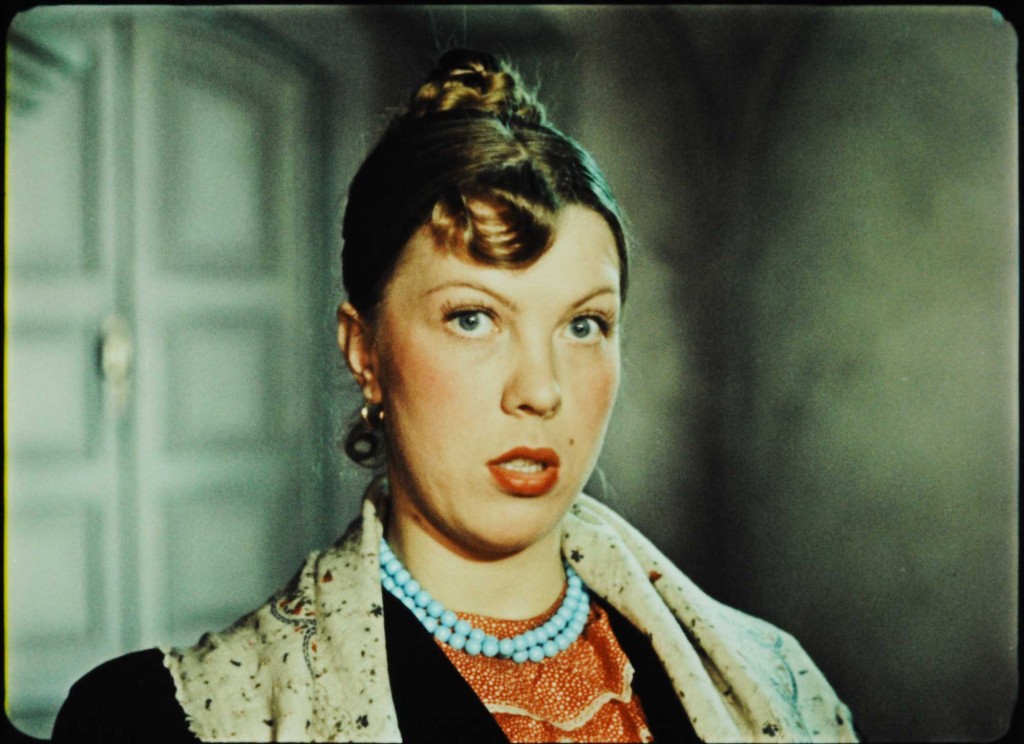Last Spring. Looking anew at the Cinema of the Thaw (Part One: Dawn)

Programme curated by Peter Bagrov and Olaf Möller
The Thaw is one of those cases in which certain images, certain characters immediately spring to mind a name or two, some titles: Michail Kalatozov, Grigorij Čuchraj, Marlen Chuciev, Otello (Sergej Jutkevič, 1955), Don Kihot (Grigorij Kozincev, 1957), Dorogoj cenoj (Mark Donskoj, 1957). Next, probably something from the 1960s generation, that apex of Soviet film history rooted in the early Thaw, the period we are interested in here, but something different nevertheless. It wasn’t always like that: some of the films we will be screening during our two explorations of the origins of the Thaw (the second part of the programme will be shown in 2016) were known by, and also popular amongst, international audiences – but that was a long time ago; and the beast called popular memory is above all good at forgetting.
Note the way the Thaw is remembered: a big subject of international importance (Shakespeare, the futility of war…), dealt with in eye-popping aesthetics (most memorably: Sergej Urusevskij’s camera pyrotechnics in Kalatozov’s Letjat žuravli, 1956).
But is that the essence of Il’ja Ėrenburg’s Ottepel’ (1954), the novel that lent its name to the period? Most definitely: No. Ottepel’ talks about daily life, small changes – liberties felt and even experienced ever so briefly following the victory over German Fascism, liberties suppressed quickly and with impunity; it is telling that two of the Thaw’s earliest activists in literature, Ėrenburg and Ol’ga Berggol’c, are closely connected to the Soviet war experience – Ėrenburg as an anti-German agitator, Berggol’c as the poetess of the Siege of Leningrad, the voice that kept people’s morale high and in fighting spirit. They understood, perhaps more than most, people’s need for some joie de vivre – for something light-hearted, optimistic and sometimes deliberately silly, albeit always in a manner that is restrained and somewhat humble, caring.
In cinema, this showed in two ways. Firstly, there is the new modesty of approach, the interest in people’s lives at their more ordinary, given shape in ways aligned with the Socialist Realist imperatives of the 30s and 40s yet in an curious, ambivalence-prone fashion. Iosif Hejfic’s Bol’šaja sem’ja (1954) as well as Stanislav Rostockij’s Zemlja i ljudi (1955) are prime examples of this: a realist cinema that acknowledges doubt and discusses ways of overcoming it; while Jurij Ozerov’s exercise in neo-realism the USSR way, Syn (1955), shows how bleak and desperate this cautiously optimistic attitude could turn – a cinema of ‘grey’ types… Secondly, there are the many developments in genre cinema, with high comedy (Švedskaja spička, Konstantin Judin, 1953), musical comedy (Karnaval’naja noč’, Ėl’dar Rjazanov, 1956) and adventure (More studënoe, Jurij Egorov, 1954; Kortik, Michail Švejcer and Vladimir Vengerov, 1954) offering ample opportunities for doing things differently, in content as well as in style, and with the complicity of an audience that knows the rules and appreciates the bending, and sometimes even, the breaking of them.
Peter Bagrov and Olaf Möller
Program
Saturday 27/06/2015
18:00
Cinema Lumiere - Sala Scorsese
VOZVRAŠČENIE VASILIJA BORTNIKOVA
VOZVRAŠČENIE VASILIJA BORTNIKOVA
Sunday 28/06/2015
11:30
Cinema Lumiere - Sala Scorsese
LURDŽA MAGDANY
LURDŽA MAGDANY
Peter Bagrov and Olaf Möller
Sunday 28/06/2015
18:30
Cinema Lumiere - Sala Scorsese
Looking anew at the Cinema of the Thaw / ŠVEDSKAJA SPIČKA
Looking anew at the Cinema of the Thaw / ŠVEDSKAJA SPIČKA
the curators Peter Bagrov and Olaf Möller
Monday 29/06/2015
18:30
Cinema Lumiere - Sala Scorsese
BOL’ŠAJA SEM’JA
BOL’ŠAJA SEM’JA
Tuesday 30/06/2015
11:15
Cinema Lumiere - Sala Scorsese
ZEMLJA I LJUDI
ZEMLJA I LJUDI
Tuesday 30/06/2015
18:30
Cinema Lumiere - Sala Scorsese
MORE STUDËNOE
MORE STUDËNOE
Wednesday 01/07/2015
11:45
Cinema Lumiere - Sala Scorsese
KORTIK
KORTIK
Wednesday 01/07/2015
18:30
Cinema Lumiere - Sala Scorsese
SUD’BA BARABANŠČIKA
SUD’BA BARABANŠČIKA
Wednesday 01/07/2015
21:45
Cinema Lumiere - Sala Scorsese
VOZVRAŠČENIE VASILIJA BORTNIKOVA
VOZVRAŠČENIE VASILIJA BORTNIKOVA
Thursday 02/07/2015
18:15
Cinema Lumiere - Sala Scorsese
SYN
SYN
Thursday 02/07/2015
21:45
Cinema Lumiere - Sala Scorsese
LURDŽA MAGDANY
LURDŽA MAGDANY
Friday 03/07/2015
18:15
Cinema Lumiere - Sala Scorsese
KARNAVAL’NAJA NOCˇ
KARNAVAL’NAJA NOCˇ
Friday 03/07/2015
21:45
Cinema Lumiere - Sala Scorsese
SYN
SYN
Saturday 04/07/2015
21:45
Cinema Lumiere - Sala Scorsese
KARNAVAL’NAJA NOCˇ


